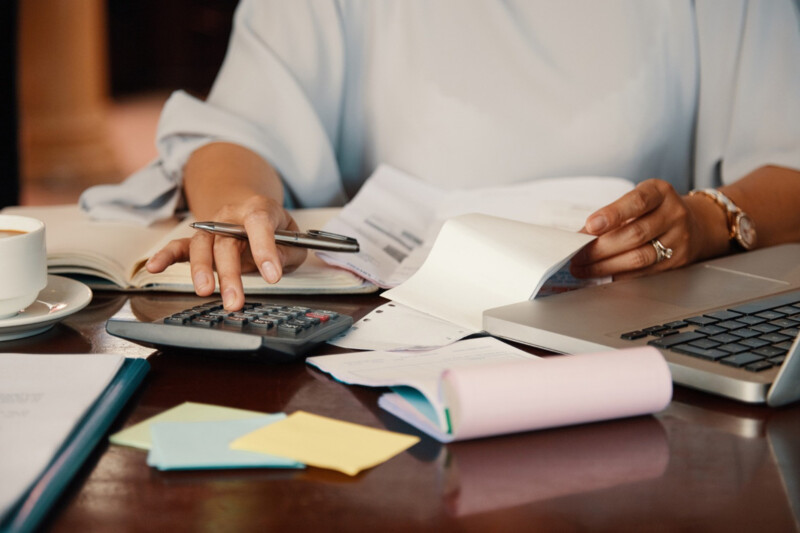Les sommes utilisées par les associations pour mener à bien leurs projets proviennent de différentes sources : subventions de l’État et des collectivités, dons de particuliers et d’entreprises, cotisations des adhérents, voire donations et legs.
Afin d’encourager la générosité d’un maximum de personnes, la loi (articles 200 et 978 du code général des impôts) a prévu que les associations puissent fournir des reçus que les donateurs présentent à l’administration fiscale pour bénéficier de réductions d’impôts.
Dans cet article, nous allons explorer ce qu’est concrètement ce précieux reçu fiscal, comment il est conçu et quelles règles une association doit suivre à ce sujet.

Un reçu fiscal, c’est quoi ?
Vous avez peut-être déjà entendu parler de ce document officiel qui atteste d’un don et permet au donateur de bénéficier d’une réduction d’impôts, pouvant varier de 66 % à 75 % pour les particuliers et de 60 % pour les entreprises. Les dons doivent être destinés à des œuvres ou organismes d’intérêt général, quels que soient leurs domaines d’action (sport, culture, art, humanitaire, éducation, etc.), et impliquent un but non lucratif ainsi qu’une gestion désintéressée. Cependant, il est crucial de noter que ni une contrepartie directe ni indirecte ne doit être impliquée, à l’exception de cadeaux minimes.
C’est à la charge du responsable de l’association de délivrer ce reçu fiscal au nom de chaque donateur, et ce reçu peut ensuite être joint à sa déclaration de revenus annuelle. Parfois, des vérifications sont effectuées pour s’assurer de la concordance entre les reçus et les montants réellement perçus sous forme de dons sur le compte de l’association.
Comment se présente un reçu fiscal ?
Lorsque vous faites un don, vous avez besoin de fournir une preuve aux services fiscaux, sous forme d’un reçu spécifique imposé par l’administration (connu sous le nom de cerfa 11580*05). Ce document atteste du don effectué et doit comporter des informations cruciales telles que le montant du don, la manière dont il a été versé, la date de ce versement, ainsi que les coordonnées complètes tant de l’association bénéficiaire que du donateur. Chaque reçu fiscal est identifié par un numéro unique, garantissant son authenticité.
Depuis 2023, une nouvelle version du reçu, préconisée par l’administration fiscale, demande également l’indication du numéro SIREN ou RNA de l’association. Néanmoins, il est possible d’ajouter une touche personnelle en personnalisant le modèle, que ce soit en y intégrant un logo ou en modifiant son format. Vous avez même la possibilité de remplir directement le modèle officiel en ligne.
Quelles règles doit respecter une association pour émettre un reçu fiscal conforme ?
Depuis la loi d’octobre 2016 pour une République numérique, faire un don à une association par SMS est devenu une réalité. Cette approche moderne pour collecter des fonds élargit et rajeunit la communauté des donateurs. Pour obtenir un numéro spécial commençant par 9, les associations doivent suivre une démarche auprès de l’AFMM (Association Française du Multimédia Mobile) et suivre un processus établi. Lorsqu’une association reçoit un don par SMS et souhaite délivrer un reçu fiscal, elle demande également l’adresse e-mail du donateur en même temps qu’elle envoie la confirmation du don.
Dans cet univers en constante évolution, des logiciels de collecte de dons en ligne sont disponibles comme Leetchi ou HelloAsso. Ces outils ne se limitent pas seulement à collecter des fonds, ils permettent également de les redistribuer et de suivre leur utilisation. Une fois le paiement reçu, le reçu fiscal est automatiquement envoyé par e-mail au donateur. Pour les donateurs réguliers, un espace personnel enregistre tous leurs versements, et les reçus fiscaux sont ajustés si nécessaire pour demeurer conformes aux règles en vigueur.
Il y a certaines conditions à remplir pour émettre un reçu fiscal :
- Être un organisme d’intérêt général,
- Être à but non lucratif,
- Exercer en France,
- Ne pas fournir de contreparties, à l’exception de menus cadeaux et/ou avantages,
- Avoir des activités ouvertes à tous,
- Fonctionner de manière désintéressée.
Si une association veut s’assurer qu’elle est éligible pour délivrer des reçus fiscaux, elle peut solliciter un rescrit fiscal auprès de l’administration. Un rescrit fiscal est une procédure qui permet à toute entité ou tout particulier de poser une question d’ordre fiscal à l’État. La Direction générale des finances publiques doit répondre dans les trois mois.
Il est essentiel de noter que l’émission de reçus fiscaux par une association non habilitée peut entraîner des sanctions. Soyez vigilants dans ce processus pour éviter toute conséquence désagréable.
